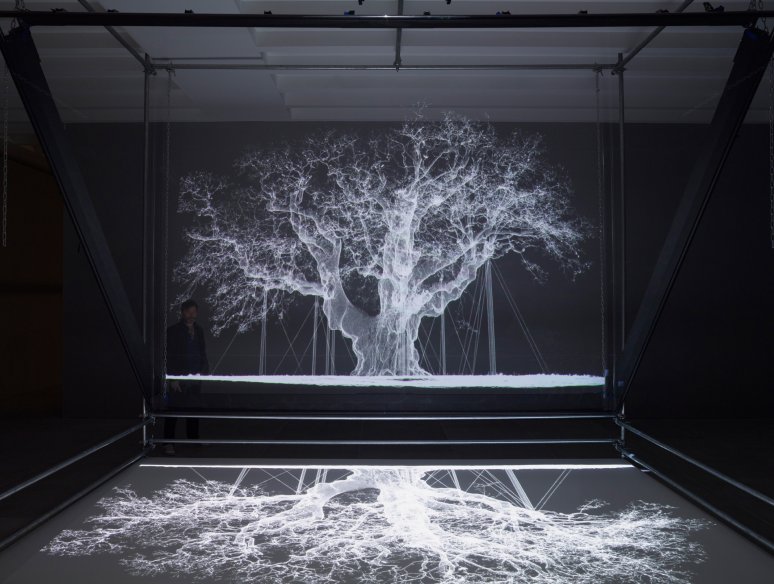Mat Collishaw
Mat Collishaw (1966, Nottingham, UK).
Lives and works in London, UK.
Mat Collishaw is one of the most significant and compelling artists in contemporary British art. With an early foundation at Goldsmiths College, Collishaw formed part of the legendary movement of Young British Artists (YBA’s). He was one of 16 young artists who participated in the seminal Freeze exhibition organized by Damien Hirst in 1988 as well as the provocative Sensation show of 1997.
Throughout his 30-year career, Collishaw has contemplated the nature of the human subconscious and explored ways to influence it through various media. Through optical illusions, paintings, projections and moving sculptures, the artist creates works and scenarios that directly and unconsciously engage their viewers. The works encourage us to think about fundamental questions of psychology, history, sociology and science. Behind the richness and visual appeal of each work there is a deep exploration of how we perceive and are influenced by the world today through images, and modern technology.
Illusion and desire are central themes in Mat Collishaw’s work, through which he questions and breaks down traditional perception of familiar images. Collishaw analyzes the influence of hidden mechanisms and visual techniques on the subconscious of the viewer. His work draws attention to the delicate balance between poetic romanticism and shocking, dark illusionism. The forbidden has always been a focus of Collishaw.
Artist often refers to the work of old masters. Most of his art pieces contain references to historical themes and classical techniques of portraying nature, characteristic of the culture of a given era. Borrowed images are digitally processed and appear in a new interpretation of the relationship between representation and reality.
Collishaw’s interest in the Victorian era is no coincidence: 19th century Britain viewed itself as a leader in scientific progress and empirical soberness. Referring to this period in his works, Collishaw imitates its ornamental, romantic style, but at the same time sheds light on society’s darker side, where base instincts are inherent in man regardless of the time period or of aesthetic or scientific advancement. His interest in this era is also associated with the study of the early Victorian technique used to create optical illusions. With the help of spectral projections, innovative photography techniques, and zoetropes invented in the early days of the Victorian era, Collishaw recreates effects that underlay pre-cinematic animation.
“My desire is to show the viewer how the time in which we live affects our perception of the world around us. These days, it’s difficult to slow down and absorb imagery of the past. Over time, our perception of paintings changes, not only because they become iconic, but because the media around us has totally changed. We don’t generally stand around looking at a picture that’s not moving, because it’s not that interesting compared to what else is on offer. I’m trying to reintroduce the concept of time to these works, to prompt the viewer to look at each of them a little longer and thus immerse themselves in the history of each picture.”
Mat Collishaw’s works have been exhibited in numerous museums and are represented in many public and private collections globally, including:
Tate (London, UK)
Somerset House (London, UK)
Birmingham Museum and Art Gallery (Birmingham, UK)
Galleria Borghese (Rome, Italy)
Pino Pascali Museum Foundation (Polignano a Mare, Italy)
Bass Museum of Art (Miami, USA)
The Brooklyn Museum (New York, USA)
Museo di Roma (Rome, Italy)
Centre Georges Pompidou (Paris, France)
Museum of Old and New Art (New South Wales, Australia) Olbricht Collection (Berlin, Germany)















